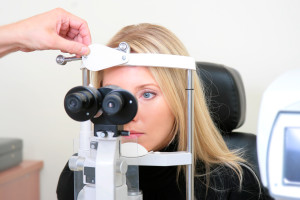Posted by: Georgia Eye Physicians and Surgeons in Latest News
Here at Georgia Eye Physicians and Surgeons we treat a number of conditions that affect vision, from the simple refractive errors that cause nearsightedness, farsightedness, and astigmatism, to complex degenerative conditions like cataracts or glaucoma that can lead to permanent vision loss. However, recently developed, advanced optical technology may allow us to go beyond merely treating these conditions and correcting visual impairment to actually helping the blind to see.

Even more exciting, a company called Second Sight has received FDA approval to begin U.S. trials of a retinal implant system that would allow visual impulses to be transmitted directly to the optic nerve, bypassing a retina damaged by degenerative eye diseases like macular degeneration and retinitis pigmentosa. Both of these diseases damage the photoreceptive cells that line the back of the retina, which turn light patterns into electrochemical nerve impulses that are interpreted by the brain. The retinal implant system would capture images with an external digital camera and then translate them, through an advanced video processor, into a series of electrical pulses, which would them be transmitted to a receiver implanted underneath the patient’s skin. This receiver, which is connected to an electrode array implanted at the back of the eye, would effectively take the place of the damaged photoreceptors, transmitting electrical signals directly to the optic nerve. Early clinical trials, conducted at the University of California in Los Angeles, gave six subjects the ability to perceive shapes and detect movement to varying degrees, and future developments are expected to greatly enhance sensitivity and resolution.
The eye specialists at Georgia Eye are constantly investigating new ways to diagnose and treat the various conditions that effect eyesight. If you have questions about the function or diseases of the eye, or would like to schedule an appointment for an eye exam, please contact Georgia Eye Physicians and Surgeons today to make an appointment. Be sure to follow us on Facebook, Twitter, and Google+ for more tips for healthy eyes.

